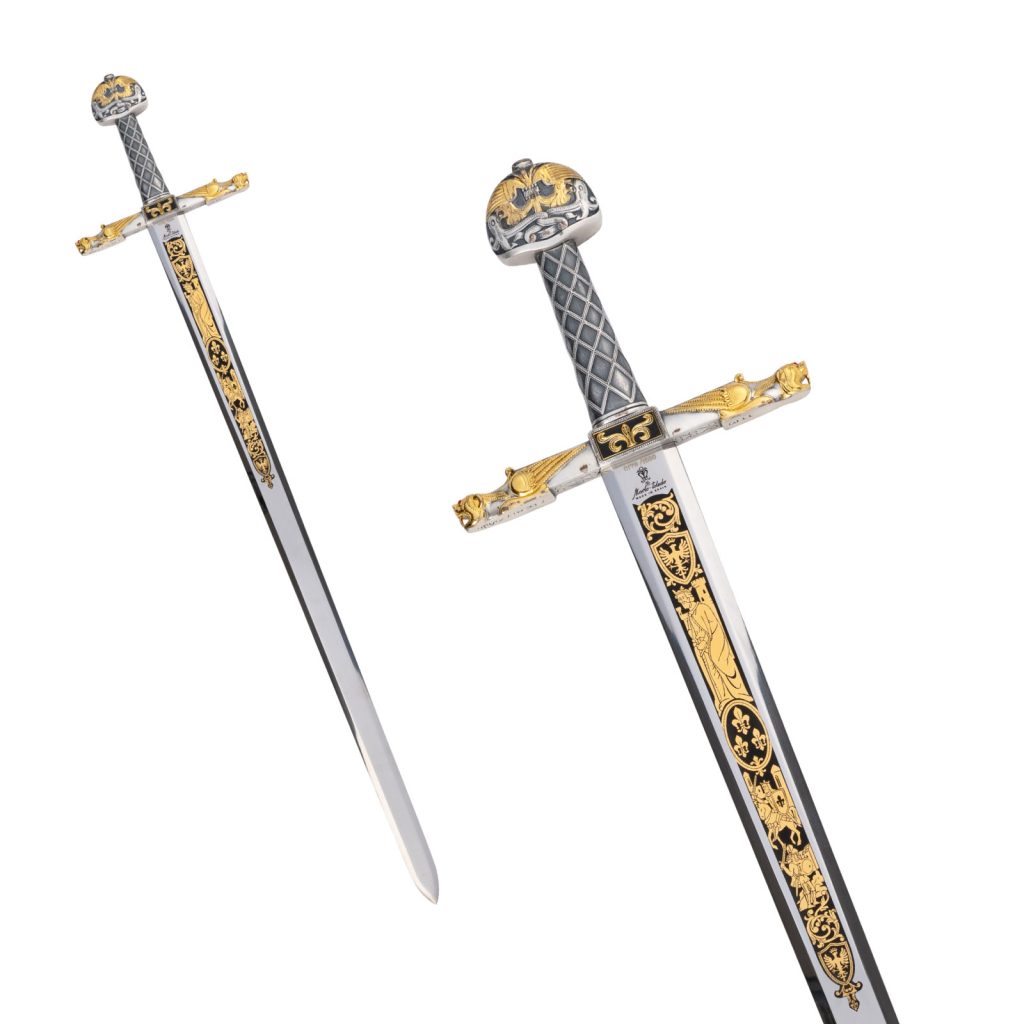Before we return to our predecessors, we figured it very well may be fascinating to perceive how they prepared fight swords in Norman times. it is an error to mistake the metalworker for the sword smith. The last option is an exceptionally talented dealer, practicing simply in the production of swords. It required long periods of involvement to have the option to create a weapon that was both adaptable and simultaneously fit for taking difficult times to its edge without chipping. The metalworker was more than fit for fixing rudders, shoeing ponies, fixing mail, a most dreary business The smithy managed in every kind of metal working, while the sword smith was a trained professional. The sword went through a difference in make. Until around 900, they were design welded. Poles of iron and carburized iron were wound together, more than once warmed to white intensity and demolished. At the point when the sword was done and cleaned, a wavy line should have been visible running down its length, giving it a satisfying example.

Enhancements in steel manufacturing after this date, in any case, implied that new sorts of swords could be delivered. To begin with, the metal was warmed and pounded more than once, for the most part north of six inch lengths. This was called ‘drawing out’ the katana zoro enma sword. This was a long interaction, for besides the fact that the smith needed to gave shut consideration to ensuring the cross segment of the weapon did not turn out to be excessively slight, he likewise needed to give the sword its essential shape. Toward the finish of this errand, the metal was exceptionally weak and must be toughened. Here the steel is relaxed. it is warmed to high intensity, then permitted to cool gradually. Frequently it was enveloped by thick layers of material or calfskin for this reason and set to the side for 24 hours. At the point when they were opened up and in their toughened state, embellishments were pounded into them. To begin with, depressions or fullers were pounded into their length.
Then, at that point, names were pounded in, frequently the name of the sword smith himself, or his production line. The metals utilized for this type of enhancement were latten, a sort of metal. Frequently, harder steel was welded to the edges by continued warming and pounding, so the sword kept up with its adaptability, yet entirely stayed sharp. The following part was treating and here the smith required all his experience and ability. The metal is warmed to an impressively lower temperature than when it is strengthened. He needed to know exactly when to extinguish the metal. On the off chance that it were done too early, it would be excessively hard. Past the point of no return, and it would turn out to be too delicate once more. The medium into which they extinguished the metal by and large, differed from one smith to another. Some depended on honey, as they said it made less air pocket. Others would utilize salt water. However others would run a film of oil on top of the water, saying that the quick extinguish was immediately eased by the oil.
